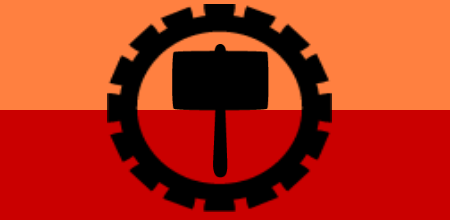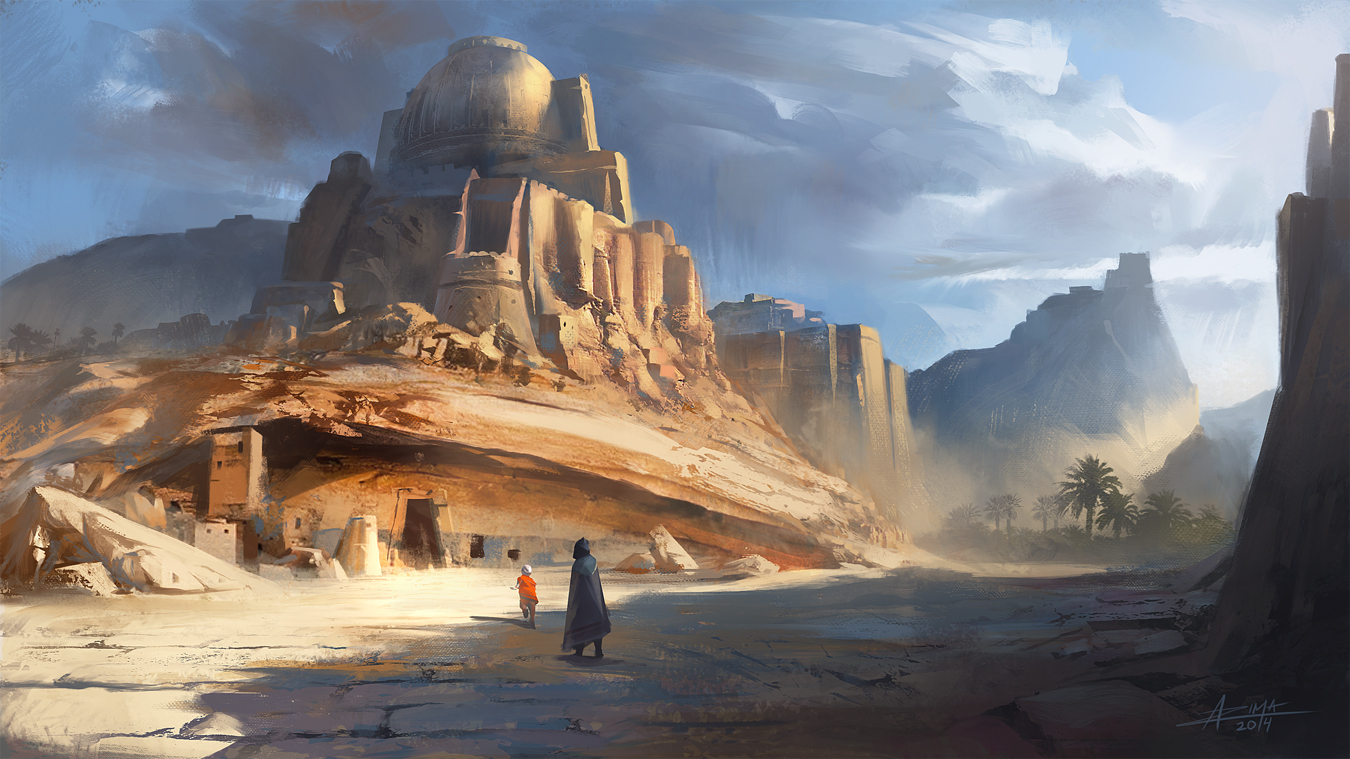Bolderun
The Kingdom of Bolderun was a Dwarven theocratic kingdom situated in the desert of Boldur's Rock and island of Pebb. It shared land borders with Lysandus, Gaelitia, and the Confederation of Gothai.
Structure
The King of Boldurun, based in the capitol of Babash, has nearly absolute authority within the regions of Boldurun. In fact, the King of Bolderun also serves as the high priest in the Temple of Boldur out of tradition from Melekh-Navi. The Dwarven lords answer directly to him and the Temple of Boldur, leading to a nearly feudalistic society. The Dwarf lords hold power in the cities they own and control and often have a peasantry listen to them.
History
The Ancient Days and Melekh-Navi
Though Bolderun as a nation would not be created until the 45th century, the land itself had a long and engaging history beforehand. The Dwarves believe that once Rishon and Ishah, the first dwarves, fell they followed the Silver River toward an oasis in the first century. There, they had children and filled the land until it became the city of Babash. Afterwords the cities in Boldur's Rock began to elect lords to enforce the argicultural developments being made upon the desert. Yet these lords were selfish and greedy. In the 10th century, it was recorded that a dwarf named Melekh-Navi was chosen as King of Babash for his piety. Melekh-Navi spent his time bringing a new law code into order: the Lawstone. It consisted of comprehensive solutions for legal disputes for the dwarves in simple form. Melekh-Navi also concerned his efforts into turning the dwarves back to worship of Boldur. He would build the Temple of Boldur in Babash for exhaltation of the creation god and became the high priest of the land. Then, at the age of 326, Melekh-Navi passed away and the throne was given to his son. Many clerics of Boldur began to believe he himself was an incarnation of Boldur and immortalized him after his death.Foundation and Empire in the Middle Eras
The next 40 centuries, the Dwarves of Boldur's Rock and Pebb would never unite. The lands had multiple kingdoms. The Kingdom of Pebyt, for example, in Pebb was a cruel land with a pharoah ruling over the people and creating mighty works. The Kingdom of Babash, however, managed to start growing all the way around Boldur's Rock and into Lisanrik and Keller. The Hill Dwarves of Boldur's Rock would unite with the Mountain Dwarves in Lysandus and form the Kingdom of Boldurun. They decided the capitol of Boldurun would be moved from Babash to the Golden City in the 40th century. However, the Dwarves faced the issue of the growing human invasions of Eiren. Humans began to settle in Keller and form small city states and tribes that dwelt on Dwarven holdings. The Dwarves would get into occassional disputes with the barbaric humans until they began to civilize them with the lawstone. Soon enough, the humans abandoned their worship of Morganine and turned to their god of knowledge and discovery, Amagus, as a solution. The humans would submit to dwarven rule during the 3rd millenia. However, some of them began to grow discontent. Then, in the 4th millenia, the Dwarves of Babash finally captured Pebb and overthrew their king to the holy order of Boldur. The Dwarves united the region and declared, in the year 4560, that the final Empire of Bolderun was completed. Out of fear, the Elves in Gaelitia began to attack Boldurun in order to keep themselves safe. The War of the Gundren Mountains commenced, which resulted in an Elven victory to keep the Dwarves from expanding any further. Not that it mattered to them; they had their empire over half of Eiren.Lysandan Revolt and Reform
When the year 5300 hit, the Dwarves began to grow concerned over the humans in Lysandus, who were beginning to both overpopulate and also plot against the Dwarves. The humans creating city states for their own self-rule. The Dwarven King responded with using force and fighting human uprisings with their military to keep them at bay. These endevours became tiring and costly to the dwarves, yet they also did not wish to lose their provinces. The humans would only take so much oppression. In the city of Byrmoor in 5478 chief Aethel Ebenwald began to rally the human tribes of Lisanrik and Keller. He started to fight back the dwarven armies. Boldurun would respond in blocking off the Silver River to both horde the water in The Golden City as well as drive the humans to crop failure to demoralize them. This plan backfired when Aethel Ebenwald learned the truth. The Battle of the Silver River would commence in 5489, leading to a human victory. Then, Aethel Ebenwald attacked the Golden City in 5492 with a Gothai distraction hitting the dwarves to their northern borders. The Battle for the Golden City took four years, until Aethel Ebenwald stormed the capitol and beheaded King Edmur Bolderun. The Dwarves fled the lands of Lysandus and it became an independent human kingdom. The new Dwarven king, Furi, would take the capitol of Bolderun back to it's original city, Babash. The dwarves were stunned by their defeat. Furi then looked back to the reign of Melekh-Navi and decided the Dwarves had once again become too greedy. He ordered a repolishing of the lawstone and began political and religious reforms that his father failed at. He deconstructed the empire and returned Boldurun into a simple theocratic monarchy. Turning back to Lysandus, at first he denounced the nation of that of warmongerers. However, he was surprisingly moved by King Adran's humble bargain for peace. After Adran's sudden demise, King Furi began to work with Queen Dariah of Lysandus, a halfdwarf, to bring further peace between the nations.Agriculture & Industry
Due to harsh desert conditions in Bolderun, the lords of the land have turned to relying on complex canal works for irrigation so territory across the desert can be met. Aquafers underneath the desert were rerouted by stone works in order to spray and leak into crops without dependency on constant rainfall.
The Dwarven peasantry rely on these to grow the essential foods (such as wheat, barley, lentils, squash, climbing beans, etc.) for their high calorie diets, but also to grow the Babashan Pam Root, an turnip-like starch with a bitter taste that gives a tongue-stinging kick. The Pam Root is often a replacement for spices if poor peasants cannot buy any, and has become integrated with their diet.
For industry, many Dwarves work in salt mines in order to trade it to the local nations of Lysandus, Gaelitia, or Gothai. The salt industry is huge on the Pebbian island and southern Bolderun. In northern Bolderun, they prefer to mine for silver and gold as their tradition is.
Trade & Transport
Dwarves of Bolderun often rely on camels or caravans to trade their goods across the deserts, since the camels, like them, pack fat in order to persist long distances. Large caravans cross the desert of Boldur's Rock is not an uncommon sight even when entering southwestern Lysandus, where they like to trade.

Upon this rock we build
Founding Date
1A 4560
Type
Geopolitical, Theocracy
Demonym
Boldurans
Government System
Monarchy, Theocratic
Power Structure
Feudal state
Economic System
Market economy
Legislative Body
King of Bolderun
Judicial Body
King of Bolderun
Official State Religion
Subsidiary Organizations
Remove these ads. Join the Worldbuilders Guild




Comments